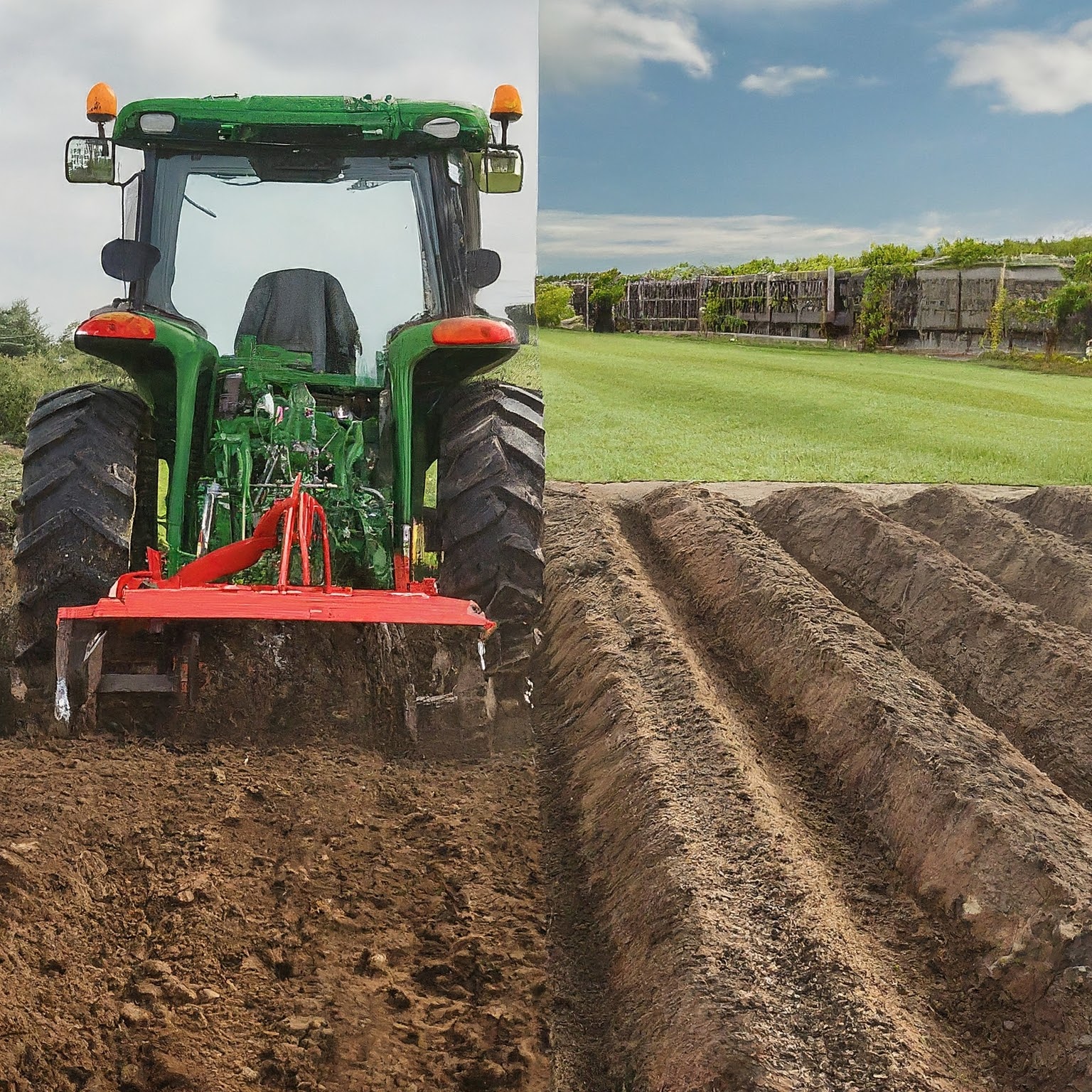
Front Tiller vs. Rear Tiller: Which is Best for Your Garden?
In this article, we will discuss the differences between front tillers and rear tillers and help you decide which one is best suited for your garden. Whether you are a beginner or an experienced gardener, choosing the right tiller can make a significant impact on the efficiency of your gardening tasks.
What are Front Tillers?
Front tillers, also known as front-tine tillers, have their tines located in front of the engine. This design allows them to dig into the soil more effectively, making them suitable for smaller, softer soil types. Front tillers are generally lighter and easier to maneuver, making them a popular choice for residential gardens and smaller plots of land.
Front tillers can be electric or gas-powered, with electric models being quieter and more environmentally friendly. They are ideal for mixing in compost or preparing seedbeds but may struggle with tougher, compacted soil.

What are Rear Tillers?
Rear tillers, also known as rear-tine tillers, have their tines located behind the engine. This design provides more stability and power, making them better suited for larger, tougher soil types. Rear tillers are often self-propelled, making them easier to use on larger areas and uneven terrain.
Rear tillers come in both counter-rotating and standard rotating models. Counter-rotating tines move in the opposite direction of the wheels, providing better traction and deeper tilling. Standard rotating tines move in the same direction as the wheels and are suitable for softer soil types.

Which is Better for Your Garden?
The choice between a front tiller and a rear tiller ultimately depends on the size and type of your garden. Front tillers are more suitable for smaller gardens with softer soil, while rear tillers are better for larger gardens with tougher soil. If you have a mix of soil types or a larger plot of land, a rear tiller may be more versatile.
Consider factors such as the terrain, your physical strength, and the types of tasks you need to perform in your garden. Front tillers are easier to maneuver and control, while rear tillers offer more power and stability.

Pros and Cons of Front Tillers
Pros: Lightweight, easy to maneuver, ideal for smaller gardens.
Cons: Less power, may struggle with tough soil, limited depth.
Pros and Cons of Rear Tillers
Pros: More power, better for tough soil, deeper tilling.
Cons: Heavy, harder to maneuver, may be overkill for small gardens.

Maintenance Tips
Regardless of whether you choose a front tiller or a rear tiller, proper maintenance is essential to ensure its longevity and efficiency. Regularly check and replace worn tines, clean the air filter, change the oil, and store the tiller in a dry, secure location.
Following the manufacturer’s guidelines for maintenance and usage will help you get the most out of your tiller and keep your garden in top shape.
Conclusion
Choosing between a front tiller and a rear tiller depends on your specific gardening needs and the size of your garden. Front tillers are ideal for smaller, softer soil types, while rear tillers are better suited for larger, tougher soil types. Consider factors such as terrain, physical strength, and the tasks you need to perform to make an informed decision.
FAQs
Can I use a front tiller on tough soil?
Front tillers are better suited for softer soil types and may struggle with tough, compacted soil. If you have tough soil, a rear tiller may be a better option.
Are rear tillers difficult to maneuver?
Rear tillers can be heavier and more challenging to maneuver compared to front tillers. However, they offer more power and stability, making them better for larger areas and tough soil types.
How do I know which tiller is best for my garden?
Consider the size of your garden, the type of soil you have, and the tasks you need to perform. Front tillers are more suitable for smaller gardens, while rear tillers are better for larger gardens and tough soil types.
Can I till my garden without a tiller?
While a tiller can make the job easier and more efficient, you can also manually till your garden using a shovel or a hoe. However, a tiller can save you time and effort, especially for larger areas.
How often should I maintain my tiller?
Regular maintenance is essential to keep your tiller in good working condition. Follow the manufacturer’s maintenance guidelines and check the tines, air filter, and oil regularly to ensure optimal performance.








